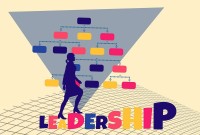- Home
- Business Processes
- Industry Knowledge
- Aerospace Industry
- Automotive Industry
- Banking Domain
- BFSI Industry
- Consumer/ FMCG Industry
- Chemicals Industry
- Engineering & Construction
- Energy Industry
- Education Domain
- Finance Domain
- Hospitality Domain
- Healthcare Industry
- Insurance Domain
- Retail Industry
- Travel and Tourism Domain
- Telecom Industry
- Leadership Skills
- eLearning
- Home
- Leadership Skills
- Team Leadership
- Laissez-Faire Leadership
Laissez-Faire Leadership
Laissez-faire is a style of leadership that affords the group members a great deal of independence. Tasks are delegated to the group members and they are responsible to see the project through to fruition. Research has shown that this style of leadership leads to the lowest levels of productivity. This article explains this style and covers the implications of having a hands-off approach and the situations where this style could be effective.
What is Laissez-Faire Leadership?
This French phrase means "leave it be," and it describes leaders who allow their people to work on their own. The laissez-faire leadership style was first described by Lewin, Lippitt, and White in 1938, along with the autocratic leadership and the democratic leadership styles. The laissez-faire style is sometimes described as a "hands-off" leadership style because the leader delegates the tasks to their followers while providing little or no direction to the followers. It allows followers a high degree of autonomy and self-rule, while at the same time offering guidance and support when requested.
Characteristics of Laissez-Faire Leadership:
1. Leaders don't interfere; they allow people within the team to make many of the decisions. Laissez-faire leaders allow followers to have complete freedom to make decisions concerning the completion of their work
2. This behavior can arise because the leader is lazy or distracted. This type of leadership can also occur naturally when managers don't have sufficient control over their work and their people. This is where this approach can fail.
3. The laissez-faire leader using guided freedom provides the followers with all materials necessary to accomplish their goals but does not directly participate in decision making unless the followers request their assistance. They provide team support with resources and advice if needed, but otherwise don't get involved.
Situations Where Effective:
- Followers are highly skilled, experienced, and educated. This works well when the team is highly capable, is motivated, and doesn't need close supervision.
- Followers have pride in their work and the drive to do it successfully on their own.
- Outside experts, such as staff specialists or consultants are being used.
- Followers are trustworthy and experienced.
- This leadership style can be effective if the leader monitors performance and gives feedback to team members regularly.
- It is most likely to be effective when individual team members are experienced, skilled, self-starters.
- The main benefit of laissez-faire leadership is that giving team members so much autonomy can lead to high job satisfaction and increased productivity.
Situations where NOT Effective:
- Followers feel insecure at the unavailability of a leader.
- The leader cannot or will not provide regular feedback to their followers.
- If the leader withdraws too much from their followers it can sometimes result in a lack of productivity, cohesiveness, and satisfaction.
- The downside is that it can be damaging if team members don't manage their time well or if they don't have the knowledge, skills, or motivation to do their work effectively.
Conclusion:
Depending on the group members that you have, Laissez-faire leadership may or may not be appropriate. The style is largely a "hands-off" view that tends to minimize the amount of direction and face time required. Laissez-faire leadership is not a good fit for individuals that require a good amount of supervision or who are new to a job, but it can work great among experienced professionals who do not require supervision. This style may impact safety concerns, productivity levels, and worker satisfaction.
Related Links
You May Also Like
-
Adaptive leadership is a style of leadership that emphasizes the importance of each and every person and role within the company. Adaptive leadership views the organization as an ever-changing, living organization, where employees can learn, adapt, and grow. Adaptive leaders mobilize people towards a common goal and also have the courage to experiment with new ideas and approaches. Adaptive leadership is the practice of mobilizing groups of people to tackle tough challenges and thrive. Learn how to adopt this style and how to become an adaptive leader!
-
What are the functions which a leader does to establish as a leader? What are the activities undertaken by them to become great leaders, rather revolutionary leaders? The most important tasks done by a leader in all situations are defining the vision, mission, and goals, leading the team, administrative functions, motivating followers, decision making and conflict resolution, and continuous development.
-
We define Lean as the systematic elimination of waste through a continual effort to decrease inefficiency; the lean leader strives to create a more efficient organization. Lean leadership is a philosophy. It is a consistent way of thinking and being in your role as a leader. The focus of this approach is on raising new leaders and help their team embrace a culture of continuous improvement. Learn what we mean by lean leadership style and its principles.
-
Collaborative leadership is all about collaborative problem-solving and decision-making or can also be defined as the leadership of a collaborative effort. . The term started to appear in the mid-1990s in response to the formation of long term public-private partnerships to rebuild public infrastructure. Learn how you can use principles of collaborative leadership to enhance your leadership skills for being an effective leader.
-
There are four characteristics of leadership that help us to understand the character of leadership as a concept. 1. Leadership is a process, 2. Leadership involves influence, 3. Leadership always occurs in a group context and 4. Leadership involves goal attainment. These are the four components that make up the character of the 'leadership' term and help us to define the leadership concept. All of these components of leadership have common characteristics.
-
Charles Darwin had once commented that “It is not the strongest or the most intelligent who will survive but those who can best manage change.” Agility means the capability of rapidly and efficiently adapting to changes and recently, agility has been applied in the context of software development, agile enterprise, and agile leadership. Agile leaders play an important, even essential, role in scaling agility in an organization. Understand how being an agile leader helps in effectively catalyzing organizational change.
-
Authoritarian Leadership Style
Although generally considered as a traditional, outdated, and non-preferred style of leadership, the autocratic style still can be used effectively in certain situations. It is a leadership style characterized by individual absolute control over a group. If you work for an autocratic leader, your job is usually to do what you're told. Learn more about this style and situations where this could be an effective style to use and when to avoid this type of approach. Analyze the characteristics of this style to evaluate if your followers consider you an authoritarian leader!
-
Facilitative Leadership is all about involving the employees in the decision-making process at all levels enhancing their sense of ownership, responsibility, and motivation. Facilitative leadership style uses a number of indirect communication patterns to help the group reach consensus and build commitment for the decision taken. To be effective in modern organizations, managers need to become facilitative leaders, learn what it means to be a one.
-
Understanding of how individuals of different cultures interact with each other is very important. Not all individuals can adapt to the leadership styles expected in a different culture whether that culture is organizational or national. In a fast-paced business environment, developing a richer understanding and sensitivity to other cultures is a skill that leaders must possess. Learn to be effective in a cross-cultural setting.
-
Bureaucratic leadership relies on a clear chain of command and strict regulations. Bureaucratic leadership style is a very decent style for work involving serious safety risks, such as handling toxic substances, moving large objects. The focus is on compliance with rules and laid down procedures to make sure that the group is doing their job correctly and safely. Learn some advantages and disadvantages of this style and situations in which this style could prove to be effective.
Explore Our Free Training Articles or
Sign Up to Start With Our eLearning Courses

About Us
Learning
© 2023 TechnoFunc, All Rights Reserved









